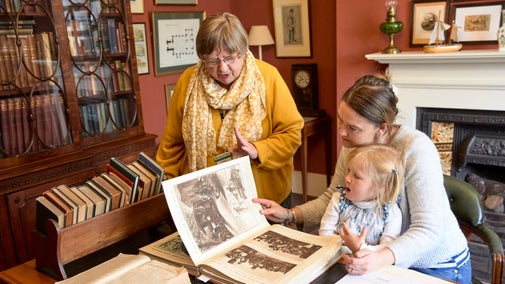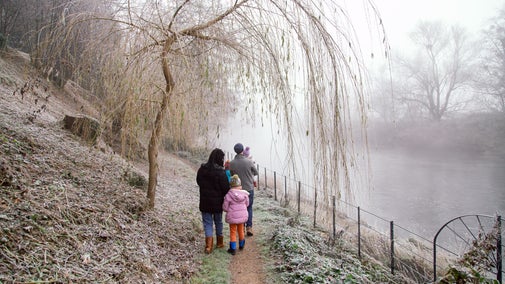
Discover more in Oxfordshire, Buckinghamshire and Berkshire
Rolling Chiltern hills, a magical garden and the home of a Victorian prime minister await you in Oxfordshire, Buckinghamshire and Berkshire.

Standing near St Giles’ Church in Stoke Poges, this extraordinary five-metre-high monument of brick faced with Portland stone captures the poet Thomas Gray’s long association with the village and recognises his world-famous 'Elegy Written in a Country Churchyard'.
Thomas Gray became an acclaimed figure in the mid 18th-century literary world following the publication of his Elegy Written in a Country Churchyard in 1751.
Composed over a number of years, the poem is believed to reference Stoke Poges, a village with which Gray had a close association throughout his life and where he was staying when he completed the poem in 1750.
The poem has 32 four-line stanzas. Here is the first:
- Thomas Gray, Elegy Written in a Country Churchyard

Acclaim was instantaneous and overwhelming, and the Elegy has also stood the test of time and was, until quite recently, routinely learnt by schoolchildren.
As well as contemplating death and the afterlife, Gray also explored ideas about society and education; themes that helped ensure his Elegy remains popular and relevant to this day.
Born on 26 December 1716, Thomas Gray was a studious child whose education at Eton, then Cambridge University, shaped his life to be one of quiet study. Although he became well-known, he was not the most prolific of poets, and in later life seemed to turn away from poetry, preferring to study history and antiquities.
After his death, on 30 July 1771 aged 54, he was buried in St Giles’ Churchyard in Stoke Poges; the scene of his greatest work.
The monument was commissioned by John Penn to form part of the vista from his new mansion at Stoke Park. Designed by James Watt and erected in 1799, it is surrounded by a ha-ha – a form of ditch – which also dates from the 18th century.
Concern for the long-term protection of the monument led villagers to buy the surrounding land (now known as Gray’s Field) in the early 1920s before giving it to the National Trust in 1925.

As well as visiting the monument, you can walk around the landscape that inspired Thomas Gray, including part of the ancient parkland of the Stoke Poges Memorial Gardens, and St Giles’ Church as well as the wonderful views across Stoke Park and the Manor House.
This is one large field and there are plenty of walks to discover across the landscape, please keep your dog on a short lead when livestock are grazing and pick up after your dog. Stoke Poges Memorial Gardens is not National Trust and welcomes assistance dogs only.
Gray’s Monument is located on Church Lane, Stoke Poges, Buckinghamshire SL2 4NZ. Car parking is available in the St Giles’ Church car park which is open daily until dusk.

Rolling Chiltern hills, a magical garden and the home of a Victorian prime minister await you in Oxfordshire, Buckinghamshire and Berkshire.
Visit some of the places we look after that have inspired famous writers, playwrights and poets, including the homes of Beatrix Potter, Virginia Woolf and Thomas Hardy.

From Agatha Christie and Beatrix Potter, to Enid Blyton and William Wordsworth, the places we care for have inspired some of our nation’s most loved writers and poets. Book a holiday to one of these cottages and discover the inspiration behind their works for yourself.

From gentle strolls for little legs to longer hikes through the rolling Chiltern hills, these are some of the best walks in Oxfordshire, Buckinghamshire and Berkshire.
